A connector AB can slide without frictiion along a II-shaped conductor located in a horizontal plane (Fig). The connector has a length l, mass m and resistance R. The whole system is located in a unifrom magnetic field of induction B directed vertically. At the moment t=0 a constant horizontal force F starts acting on the connector shifting it translationwise to the right. Find how th e velocity o fhte connector varies with time t. The inductance of the loop and the resistance of the II-shaped conductor conductor are assumed to be negligible
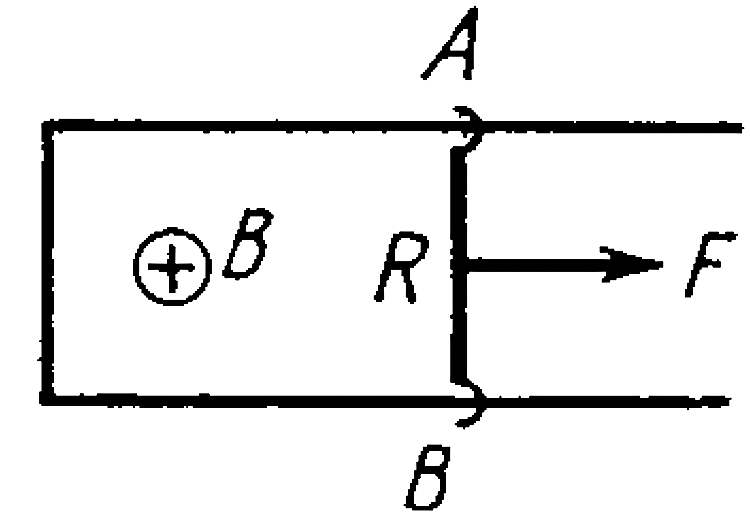
With the help of the circulation, done in the previous problem, Ampere's force on the connector,
→Famp=vB2l2R directed toward left.
Now from Newton's secound law,
F−Famp=mdvdt
So, F=vB2l2R+mdvdt
or, ∫t0dt=m∫v0dvF−vB2l2R
or, lm=RB2l2In⎛⎜⎝F−vB2l2RF⎞⎟⎠
Thus, v=(1−e−tB2l2Rm)RFB2l2

Topper's Solved these Questions
- BOOK - IE IRODOV, LA SENA & SS KROTOVCHAPTER - ELECTRODYNAMICSEXERCISE - Motion Of Charged Particle In Magnetic Field36videos
ELECTRODYNAMICS
- BOOK - IE IRODOV, LA SENA & SS KROTOVCHAPTER - ELECTRODYNAMICSEXERCISE - Constant Magnetic Fiels - Magnetics69videos
ELECTRODYNAMICS
- BOOK - IE IRODOV, LA SENA & SS KROTOVCHAPTER - ELECTRICITY AND MAGNETISMEXERCISE - All Questions6videos
ELECTRICITY AND MAGNETISM
- BOOK - IE IRODOV, LA SENA & SS KROTOVCHAPTER - ELECTROMAGNETISMEXERCISE - All Questions24videos
ELECTROMAGNETISM
Similar Questions
At the moment t=0 on electron leaves one plate of a parallel-plate capacitor with a neglible velocity. An accelerting volatage, varrying as V=at, where a=100V/s is applied between the plates is l=5.0cm. What is the velocity of the of the electron at the moment it reaches the opposite plate?
01:20View SolutionA current I=1.00 A circulates in a round thin-wire loop of radius R=100mm. Find the magentic induction
(a) at the centre of the loop,
(b) at the point lying on the axis of the loop at a disatnace x=100mm from its centre.04:21View SolutionFind the electric field potentail and strength at the centre of a hemisphere fo raidus R ahcged uniformly with the the surface density σ.
03:40View SolutionCurrents l1andI2 flow in the same direction along two parallel conductors, with l1>l2 • In which of the three regions I,IIorIII, and at what distance from the conductor carryi ng current 11 is the magnetic induction equal to zero?
04:30View SolutionA rectangular loop with a sliding connector of length l is located in a uniform magnetic field perpendicular to the loop plane. The magnetic induction is equal to B. The connector has an electric resistance R , the sides ab and cd have resistances R_1 and R_2 . Neglecting the self-inductance of the loop, find the current flowing in the connector during its motion with a constant velocity v.
05:03View SolutionA rectangle loop with a sliding connector of length l=1.0m is situated in a uniform magnetic field B=2T perpendicular to the plane of loop. Resistance of connector is r=2Ω. Two resistance of 6Ω and 3Ω are connected as shown in figure. the external force required to keep the connector moving with a constant velocity v=2m/s is
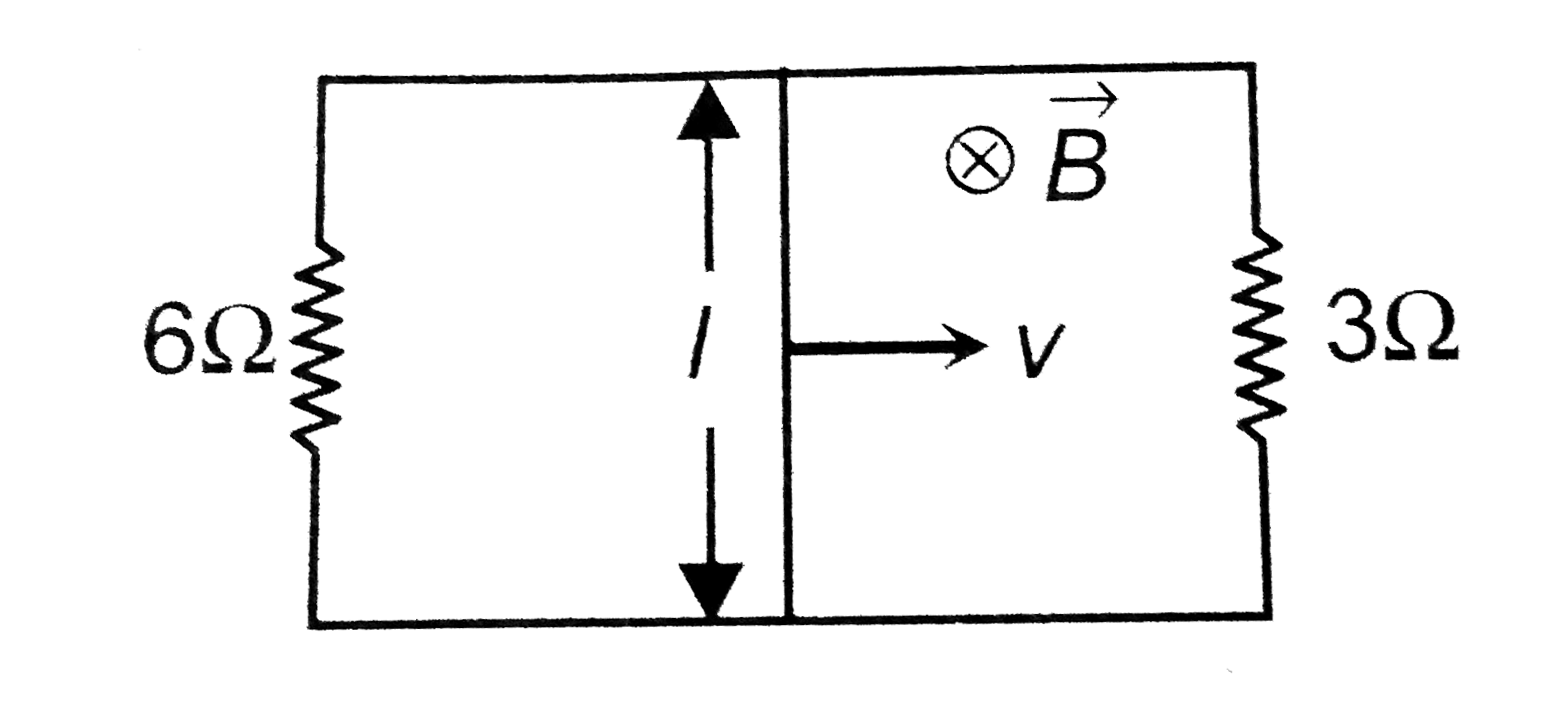 04:50View Solution
04:50View SolutionA long straight wire carrying a current I and a II - shaped conductor with siding connector are located in the same plane as shown in Fig. The connector of length l and resistance R sides to the right with a current induced in the loop as a function of separation r between the connector and the stragiht wire. The resistance of the II -shaped conductor and the self-induced of the loop are assumed to be negligible.
09:51View SolutionA copper connector of mass m slides down two smooth cooper bars, set at an angle α to the horizontal due to gravity (Fig). At the top the bars is equal to l. The system is located in a unifrom magnetic field of induction B, perpendicular to the plane in which the connector slides. The resistances of the bars, the connector and the sliding contacts, as well as the self-inductance of the loop, are assumed to be negligible. Find the steady-state velocity of the connector.
 View Solution
View SolutionA loop (figure) is formed by two parallel conductores connected by a solenoid with inductance L and a conducting rod of mass m which can freely ( without friction) slide over the conductors. The conductors are located in a horizontal plane in a uniform vertical magnetic field with induction B . The distance between the conductors is equal to l . At the moment t=0 the rod is imparted an initial velocity upsilon_(0) directed to the right. Find the law of its motion x(t) if the electric resistance of the loop is negligible.
05:44View SolutionA conductor of length l and mass m can slide without any friction along the two vertical conductors connected at the top through a capacitor. A uniform magnetic field B is set up _|_ to the plane of paper. The acceleration of the conductor
View SolutionA loop is formed by two parallel conductors connected by a solenoid with inductance L and a conducting rod of mass m which can freely (without friction) slide over the conductors. The conductors are located in a horizontal plane in a uniform vertical magnet field B . the distance between the conductors is l . At the moment t=0 , the rod is imparted an initial velocity v0 directed to the right. Find the law of its motion x(t) if the electric resistance of the loop is negligible.
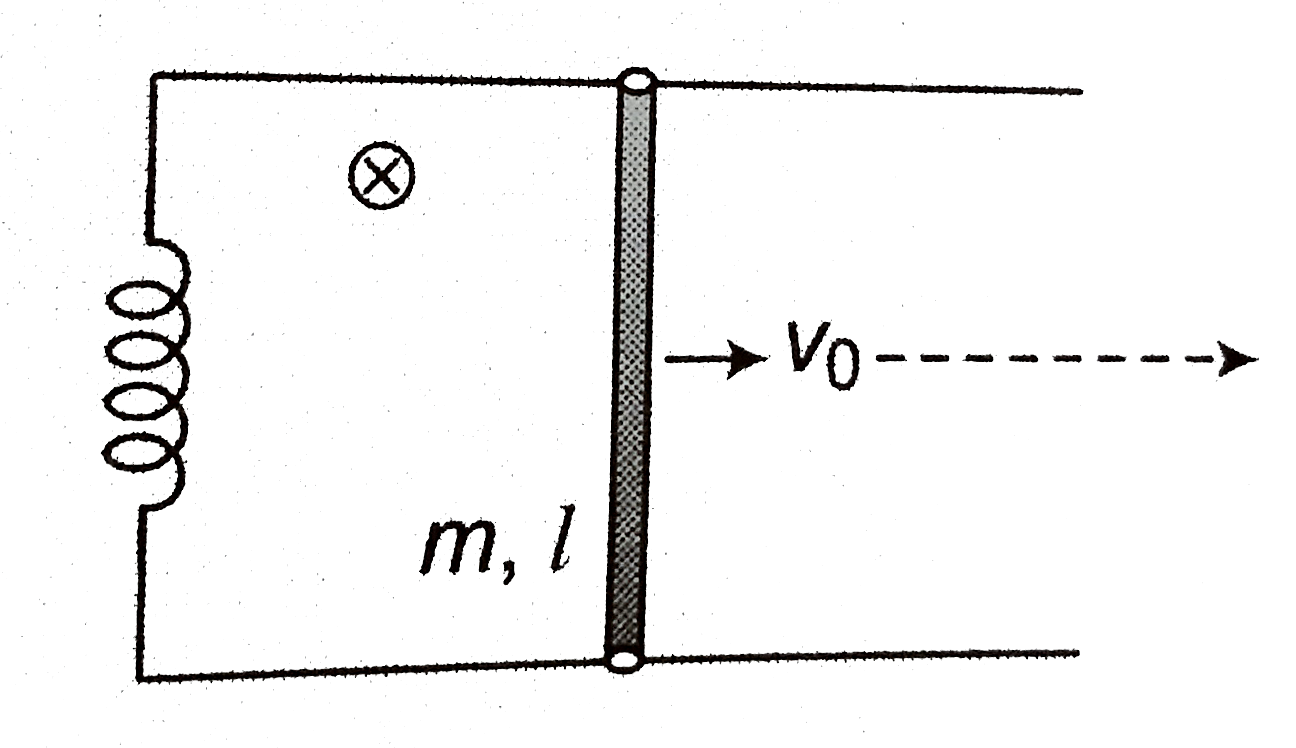 06:10View Solution
06:10View SolutionA coil of inductance L connects the upper ends of two vertical copper bars separated by a distance l . A horizontal conducting connector of mass m starts falling with zero initial velocity along the bars without losing contact with them. The whole system is located in a uniform magnetic field B perpendicular to the plane of the bars. Find the law of motion x(t) of the connector.
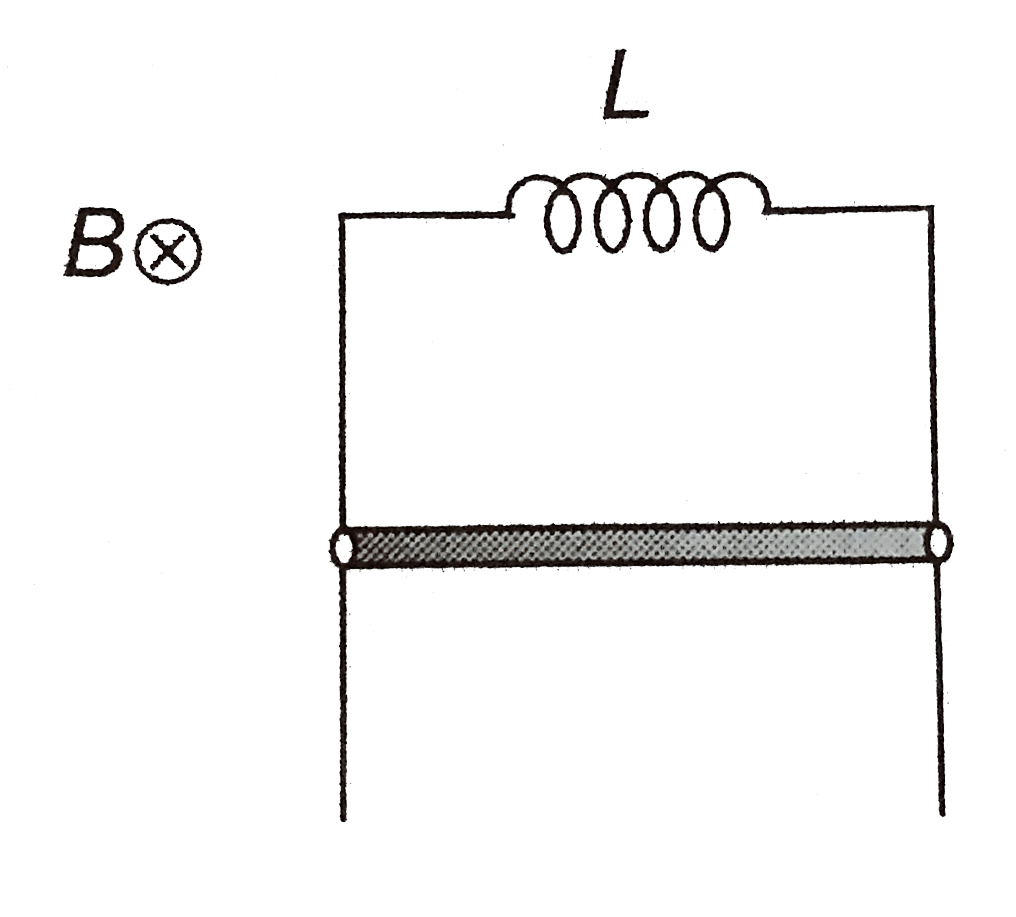 03:38View Solution
03:38View SolutionA loop is formed by two parallel conductors connected by a solenoid with inductance L=2H and a conducting rod of mass m=80g, which can freely (without fricition) slide over the conductors. The conductors are located in a horizontal plane in a uniform vertical magnetic field with induction B=4T. The distance between the conductors is equal to l=4cm. At the moment t=0 the rod is imparted an initial velocity v_(0)=2 cm//s directed to the right. Find the amplitude (in cm) for the oscillations of conducting rod, if the electric resistance of the loop is negligible.
01:36View SolutionA copper connector of massm, starting from rest, slides down two conducting bars set at angle α to the horizontal, due to gravity (see figure). At the top the bars are interconnected trhough a resistance R. The separation between the bars is equal to l. The system is located in uniform magnetic field of induction B, perpendicular to the plane in which the connectr slides. The resistance of the bars the connector and the sliding contacts, as well as the self inductance of the loop, are assumed to be negligible. The coefficient of friction between the connector and the bars is equal to 12 and α
(a) Find the steady-state velocity of the connector.
(b) How will your answer differ if the magnetic field was in opposite direction.
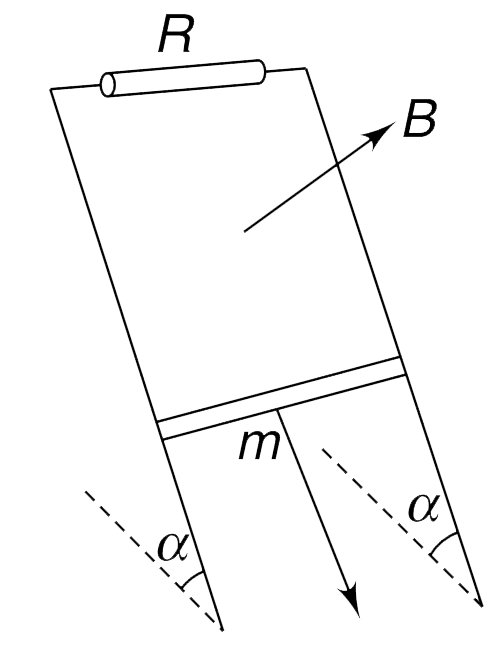 02:40View Solution
02:40View SolutionA II -shaped conductor is located in a uniform magnetic field perpendicular to the plane of the conductor and varying with time at the rate (dB)/(dt)=0.10 T//s .A conducting connectors starts moving with a constant acceleration w=10 cm//s^(2) along the parallel bars of the conductor.The length of the connector is equal to l=20 cm .Find the emf induced (in mV ) in the loop t=2.0 s after the beginning of the motion.If at the moment t=0 the loop area and the magnetic induction (B) are equal to zero.The self inductance of the loop is to be neglected.
05:31View Solution

